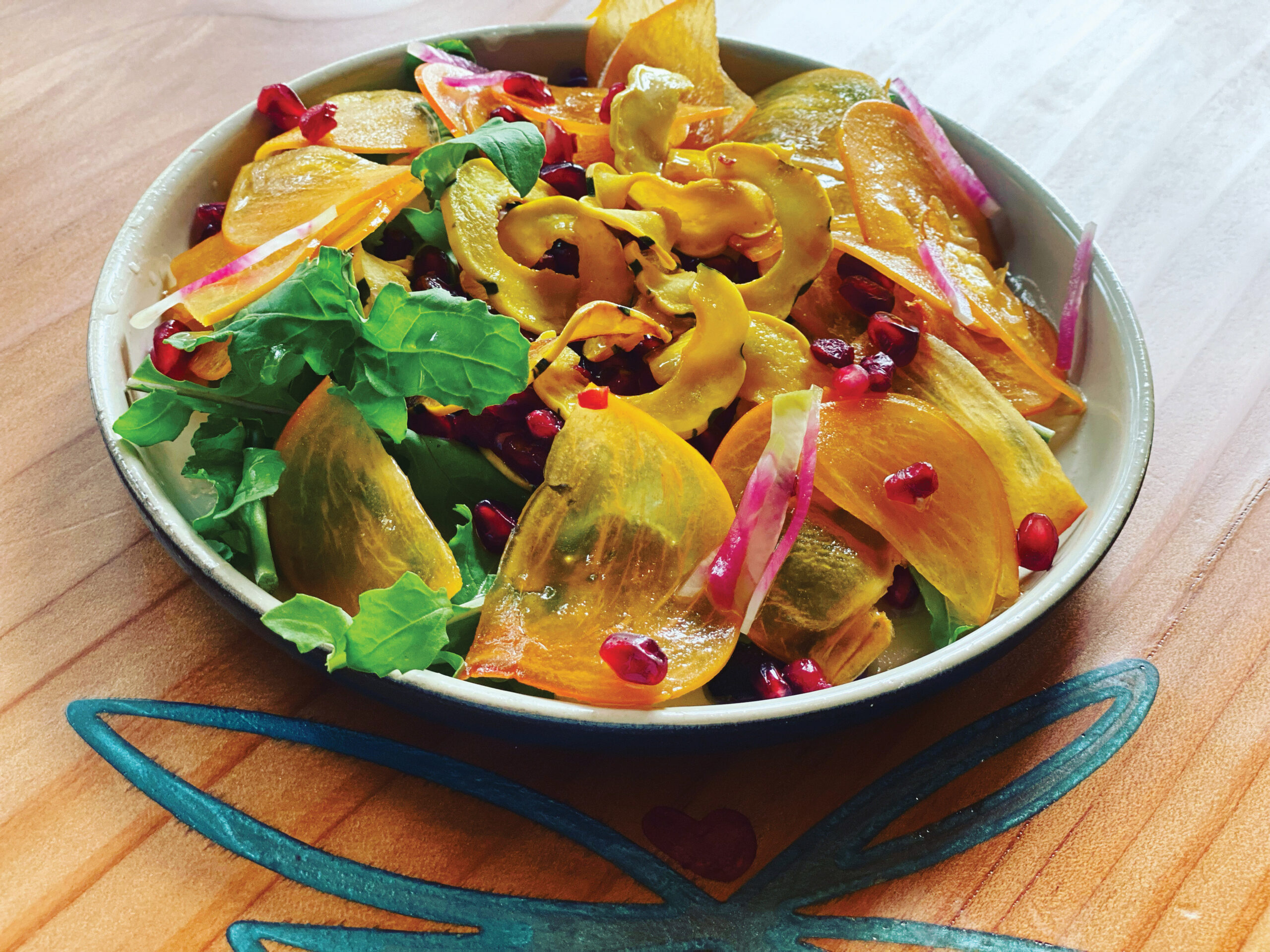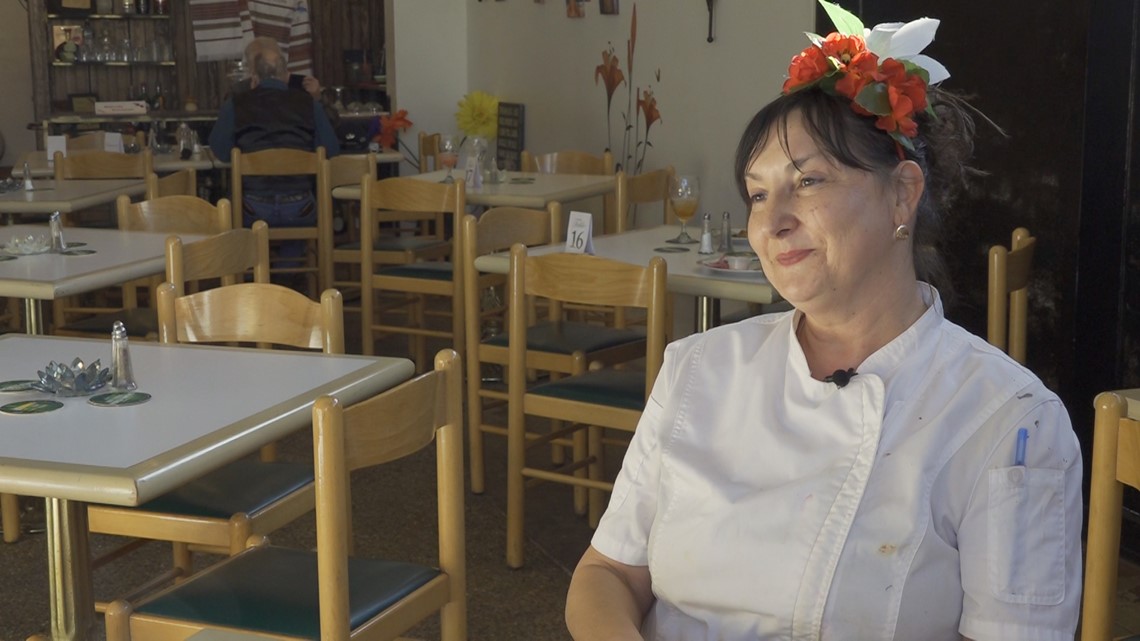Latin American cuisine represents many cultures and perspectives. From the southernmost part of North America in Mexico to the mountainous points of South America in Argentina, the food in these places is as diverse as their changing climates and terrains.
To learn more about how this unique diversity is represented in Mid-Michigan, I visited a few Latin American restaurants in Lansing.
La Fajita (4405 S Martin Luther King Jr. Blvd)
In the southern part of Lansing, along Martin Luther King Jr. Boulevard, is La Fajita. The food truck is parked in the MLK Plaza parking lot next to the Liquor King.
La Fajita owner Eva Gonzalez cooks a Mexican huarache. She said the dish is one of their most ordered items.
“We like to make our huaraches fresh. It will be a huarache steak, ”said Eva Gonzalez.
“So she’s making a traditional corn masa-based ‘huarache’ – today she’s making the steak-based one,” Gonzalez’s daughter Cindy Espinosa-Gonzalez explained.
Huaraches are a dish from the state of Michoacán, west of Mexico City, where their family comes from.
“Now, huaraches are basically a long, oval masa base that is deep-fried and then grilled with meat and the ingredients that cover it,” Espinosa-Gonzalez added.
Eva Gonzalez puts beans, lettuce, onions and cotija cheese on her huaraches.
She bought the food truck that houses La Fajita almost three years ago. She always loved to cook and said her late mother was her first cooking teacher. She started to cry when she remembered her.
“I’ve always loved to cook. It reminds me of a happy memory I have of my mother and I. She was the one who taught me how to cook,” Gonzalez said.
“The passion for cooking started when she was younger. Basically, she took my grandmother’s original recipes and made them her own, ”Espinosa-Gonzalez added.
She is at La Fajita six days a week to help her mother run the food truck.
“A lot of people don’t take someone with a heavy accent seriously, and it was difficult to get your voice heard in a certain way. So it’s a dream for me to push her and help her achieve her dreams, as well as mine, ”Espinosa-Gonzalez said.
When Gonzalez first moved to Lansing 21 years ago, she started working in a factory, but keeping a job wasn’t always easy.
“I always wanted to move forward, but people treated me badly because I’m a Latina and an immigrant. It was difficult, but it made me stronger,” she said. added.
What Espinosa-Gonzalez says that sets La Fajita apart from other Mexican places in the city is the authentic flavor of home that his mother sounds to her burritos, fajitas, huaraches and gorditas.
“She thinks that by trying her food, people will get addicted right away,” she explained.
Tantay (1611 E rue Kalamazoo)
The next stop on the tour, on the east side of town, is Tantay. The restaurant is located in the accelerator kitchen at Allen Neighborhood Center.
José Aste is the owner. He says it’s the only Peruvian restaurant in the Mid-Michigan area.
“I wanted to bring people together, that’s the point. Tantay means ‘to bring people together’ [or] ‘join.’ It’s a word in Quechua, which is the mother tongue of the Incas, ”Aste explained.
The most popular dish here is Aji De Gallina, or Peruvian spicy cream chicken. He said he learned how to make gravy from his mother.

“We use a little bread. We use milk in there. We prepare our stir-fry which includes our “Aji Amarillo”. And once that’s done, you put it all in a blender, which makes this flavorful and creamy sauce really nice, ”he added.
Each Tantay dish is made with Aji Amarillos, that is, Peruvian yellow peppers.
When Aste first opened Tantay, he was buying the frozen peppers at a grocery store in Detroit, but now he’s working with Morgan Doherty, a resident of Lansing, to grow them in town.
“Morgan and I are working together. We have been working together, especially for two months. But they have a farm in Fenner and they grow Peruvian peppers in Lansing. Right here! So that’s amazing, ”he said.
At Tantay, everything is farm-to-table, from the microgreens he uses to garnish the Peruvian potato salad to the peppers of Aste’s favorite dish – Pollo Saltado, or Jumping Chicken.
It is a meal that uses elements of the food that Chinese immigrants prepared when they arrived in Peru in the early 19th century.
“So we cook it on a wok, a large wok, on high heat, that’s why it’s called ‘saltado’ or ‘jumping.’ So it’s like Jumping Chicken – Pollo Saltado. Because the idea is that when you cook it, it shouldn’t take more than five minutes, you know, to cook that part, ”Aste said.
For Aste, making Peruvian cuisine isn’t just about cooking or authentic ingredients, it’s about bringing people together. Something he says he missed during the pandemic.
“I really genuinely love people. I’m really interested in people and I come back to this experience of growing up with my parents cooking and like everyone else in the kitchen, everyone having so much fun, talking. It was all about a kitchen, so I really want to create that, like an inclusive atmosphere and all that, ”he said.
Mexican restaurant in the old town of Pablo
(311 Avenue César E. Chavez)
The last stop on our trip is the Mexican restaurant in the old town of Pablo. It is one of the oldest Latin American restaurants in Lansing. The cozy establishment has been installed in its neighborhood house for 16 years.
Michelle Jokisch Polo
/
Michelle Jokisch Polo
Its namesake, Pablo Maldonado Chavez, sits in one of the few cabins lining the walls.
Maldonado Chavez said that before opening Pablo’s he was a truck driver on the week and a Mexican pastry chef on the weekends.
“So when I come home on the weekends, I call all my friends to invite them to buy pan dulce ‘sweet breads’. So the idea started when I saw that people were interested in more ‘pan’ every day. They call me every time to ask for pan dulce, ”said Maldonado Chavez.
The community’s interest in the bread he made at home prompted him to quit his job as a truck driver and open a bakery.
While Maldonado Chavez started with a menu that included traditional American fare like bagels, he quickly realized that customers preferred the Mexican dishes he also offered. Gorditas are Pablo’s most popular dish.
“Gorditas are handmade tortillas, and they’re stuffed with meat, cheese and refried beans. It’s like a pocket. A pocket of corn sandwich, ”he explained.
And what makes him uniquely Mexican? He said these are his wife’s recipes. She based them on traditional dishes from the state of Puebla, Mexico.
“We have a mole. Mole is from Puebla, where I am from. She plays the mole. She makes the tamales, and she makes the sauces, the salts and probably just about everything, she has the recipe for everything, ”explained Maldonado Chavez.
At Pablo’s, expect to be befriended. Maldonado Chavez said that’s what keeps his customers coming back for more.
“If someone comes here as a customer, I won’t let them go as a customer. I let him leave as a friend. This is the attitude we adopt with customers, ”he added.
It’s a feeling these restaurateurs all have in common; their love for the tastes of the house and the desire to share them with their community here in Lansing.









